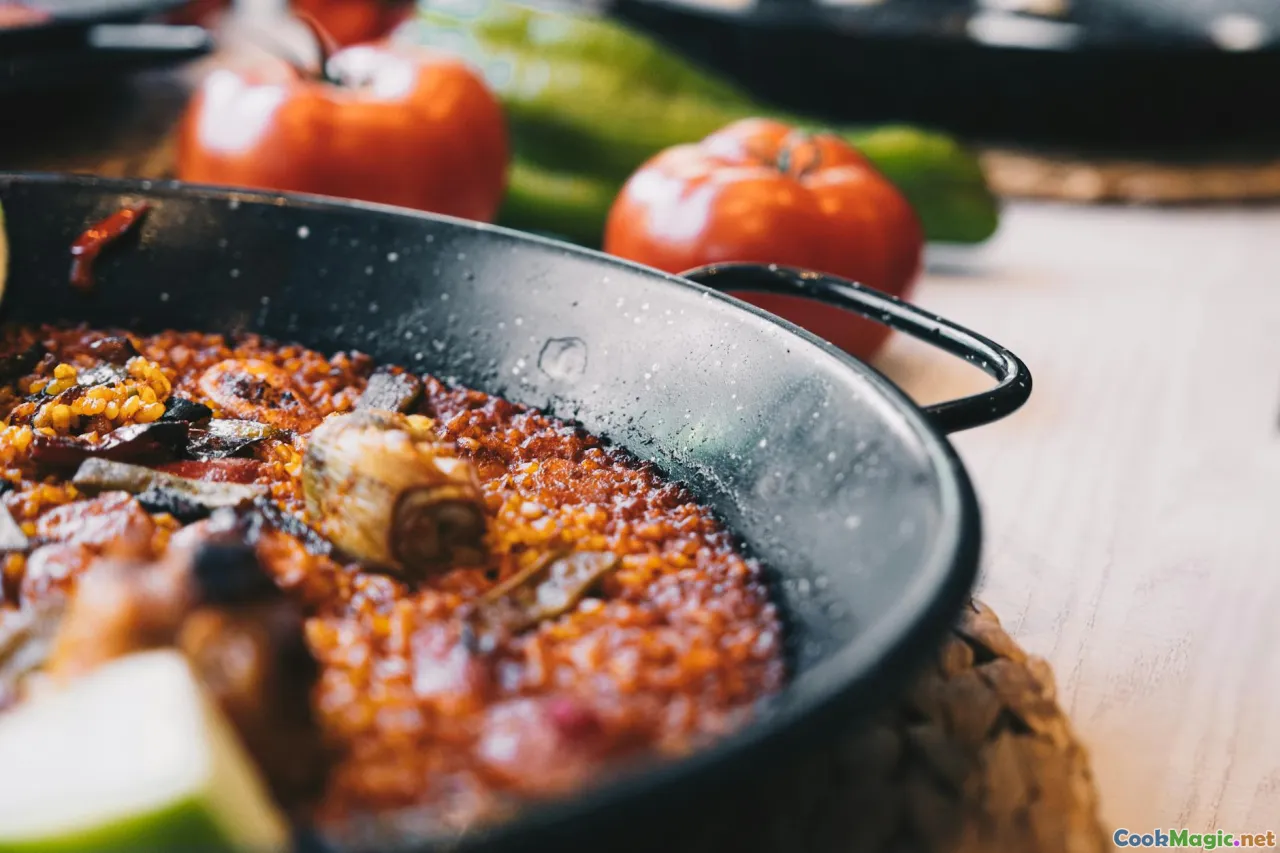Culinary Crossroads: Spain and the Moors
7 min read Discover the rich culinary legacy of Moorish Spain, exploring how centuries of cultural exchange shaped iconic flavors and dishes in modern Spanish cuisine. April 21, 2025 09:55
Culinary Crossroads: Spain and the Moors
Imagine walking through the sun-drenched streets of Seville or Granada, where the air is infused with a symphony of spices, citrus, and herbs that seem to whisper stories of centuries past. Spain, renowned for its vibrant tapas, saffron-infused paellas, and smoky chorizo, is also a living testament to a profound culinary legacy left by the Moors—those brilliant architects of culture, science, and cuisine who ruled parts of the Iberian Peninsula for over 700 years.
The Historical Tapestry of Moorish Spain
The Moorish presence in Spain began in 711 AD when Tariq ibn Ziyad’s forces crossed the Strait of Gibraltar, heralding a new era of Islamic rule. This period, often called Al-Andalus, was marked not only by political upheaval but also by an extraordinary flowering of arts, sciences, and, crucially, culinary innovation. The Moors brought with them a treasure trove of ingredients, techniques, and flavors that would forever alter the landscape of Spanish cooking.
A Fusion of Cultures: The Birth of Andalusian Cuisine
The culinary landscape of medieval Spain became a melting pot—where Berber, Arab, Jewish, and Christian traditions intertwined to create a cuisine rich in depth and diversity. Dishes that once seemed exotic or unfamiliar gradually found their place on the Spanish table, evolving into the foundations of what we now recognize as traditional Spanish cuisine.
Key Ingredients: The Moorish Pantry
The Moorish influence introduced a host of ingredients that transformed local ingredients into new, exciting flavors:
- Saffron: The golden thread that colors and flavors many dishes, from rice to stews.
- Almonds and Nuts: Used in both savory and sweet creations, adding richness and texture.
- Lentils and Chickpeas: Staple sources of protein, forming the base for hearty stews.
- Citrus Fruits: Lemons and oranges, which invigorate dishes with bright acidity.
- Spices: Cinnamon, cumin, coriander, and cardamom, imparting warmth and complexity.
Techniques and Dishes: A Culinary Heritage
The Moorish influence introduced sophisticated cooking techniques such as stewing, marinating, and the use of intricate spice blends. Many iconic dishes owe their origins to this era:
- Gazpacho: Though now a staple of Spanish summer cuisine, its roots are deeply Moorish, combining fresh tomatoes, cucumber, garlic, and vinegar.
- Tajines and Tagines: Adapted into local stews, slow-cooked with local meats and fragrant spices.
- Arroz con Pollo: Rice dishes flavored with saffron and spices, reminiscent of Moorish pilafs.
- Pestiños and Turrón: Sweet confections that blend Arab confectionery techniques with local ingredients.
Architectural and Cultural Echoes in Cuisine
The influence extended beyond ingredients to cooking methods and dining customs. The Moorish penchant for slow cookingandlayered flavorsis evident in dishes likemarmitakoandadobo. The use of citrus and herbs in marinades and sauces echoes the Moorish love for bright, aromatic flavors.
Personal Reflections: A Culinary Journey
As a food enthusiast wandering through the bustling markets of Granada, I was struck by the vibrant stalls laden with saffron strands, dried citrus peels, and aromatic spice mixes. Tasting a Moorish-inspired salmorejo—a creamy tomato and bread soup—was like tasting history itself. The depth of flavor, the velvety texture, and the burst of fresh herbs transported me to a time when trade routes brought these ingredients across continents.
Modern-Day Moorish Influences in Spanish Cuisine
Today, chefs and home cooks continue to celebrate this cross-cultural legacy. Modern interpretations of traditional dishes often feature innovative techniques while honoring the flavors that have endured for centuries.
For instance, contemporary tapas bars might serve cumin-spiced lamb skewersorcitrus-marinated olives, showcasing the enduring impact of Moorish ingredients and methods. In Andalusian kitchens, the ancient art of slow-cooked tagines has found a new home, infused with local ingredients yet retaining its original spice-driven soul.
Preserving the Culinary Heritage
Efforts are underway to preserve and celebrate this rich culinary history. Food festivals in Seville and Granada feature Moorish recipes, while culinary schools teach the techniques that have been passed down through generations.
Why It Matters
Understanding the Moorish influence deepens our appreciation of Spanish cuisine—not merely as a collection of dishes but as a living history that reflects centuries of cultural exchange and adaptation. Every saffron-infused paella, every almond-topped dessert, echoes the vibrant tapestry of Moorish Spain.
Final Thoughts
Culinary crossroads like Spain and the Moors remind us that food transcends borders. It is a language of connection, memory, and identity. Exploring this heritage offers a delicious journey through time, revealing how a shared history can transform a nation's flavors into a global treasure.
So next time you savor a plate of paella, remember: you are tasting centuries of history, a symphony of cultures woven into the very fabric of Spanish cuisine. The Moorish influence is not just a chapter in history—it’s an ongoing narrative, enriching our plates and palates with every bite.









